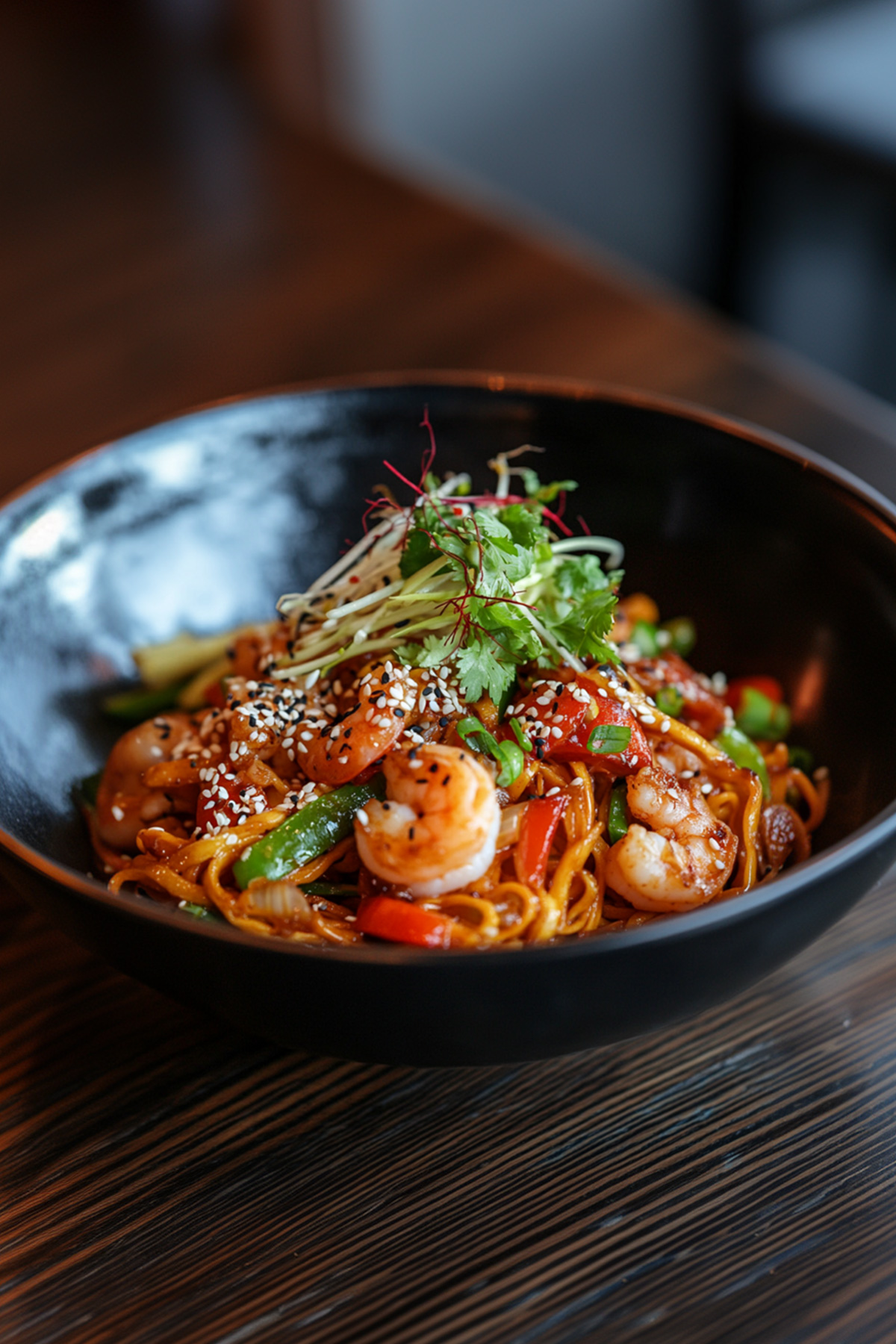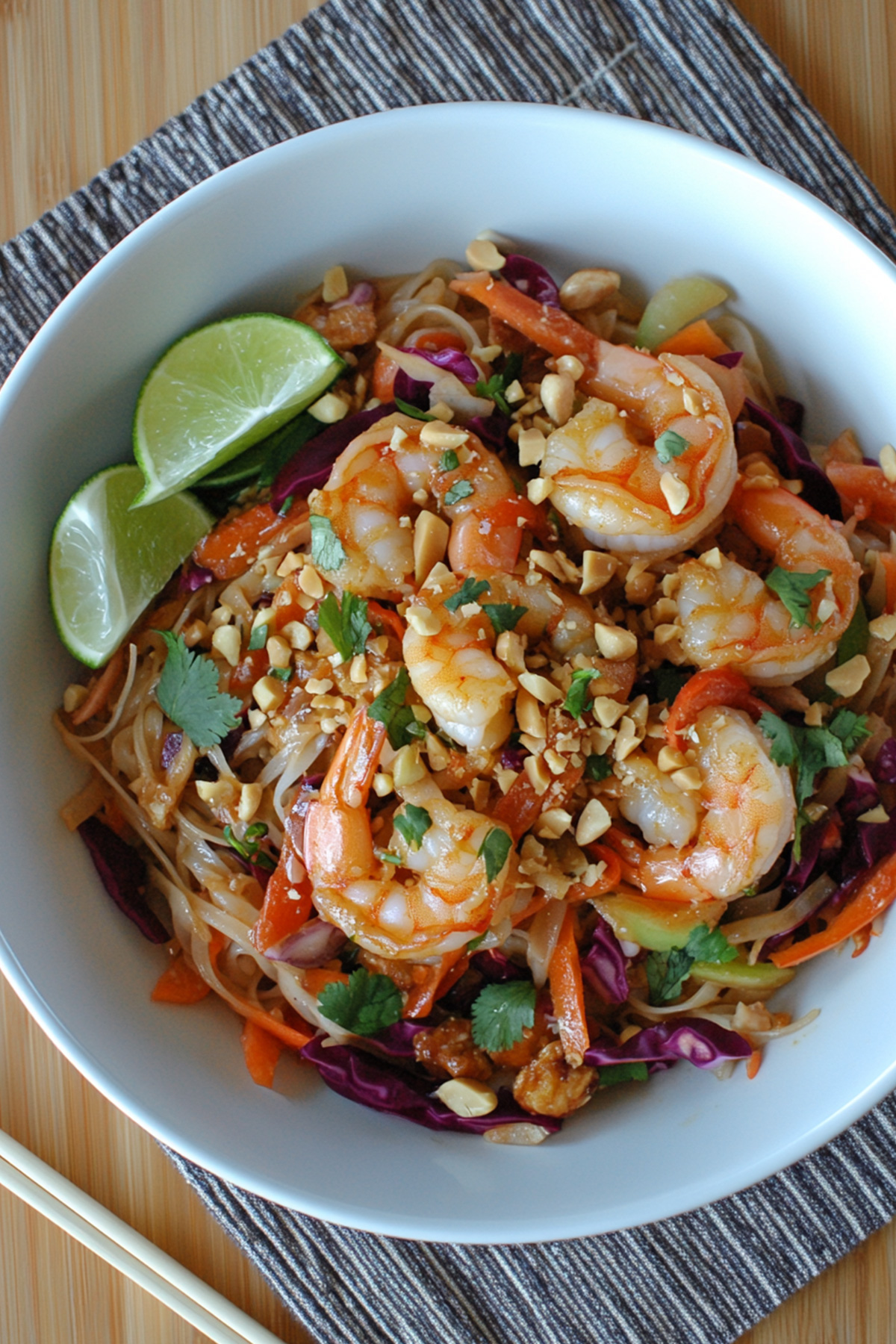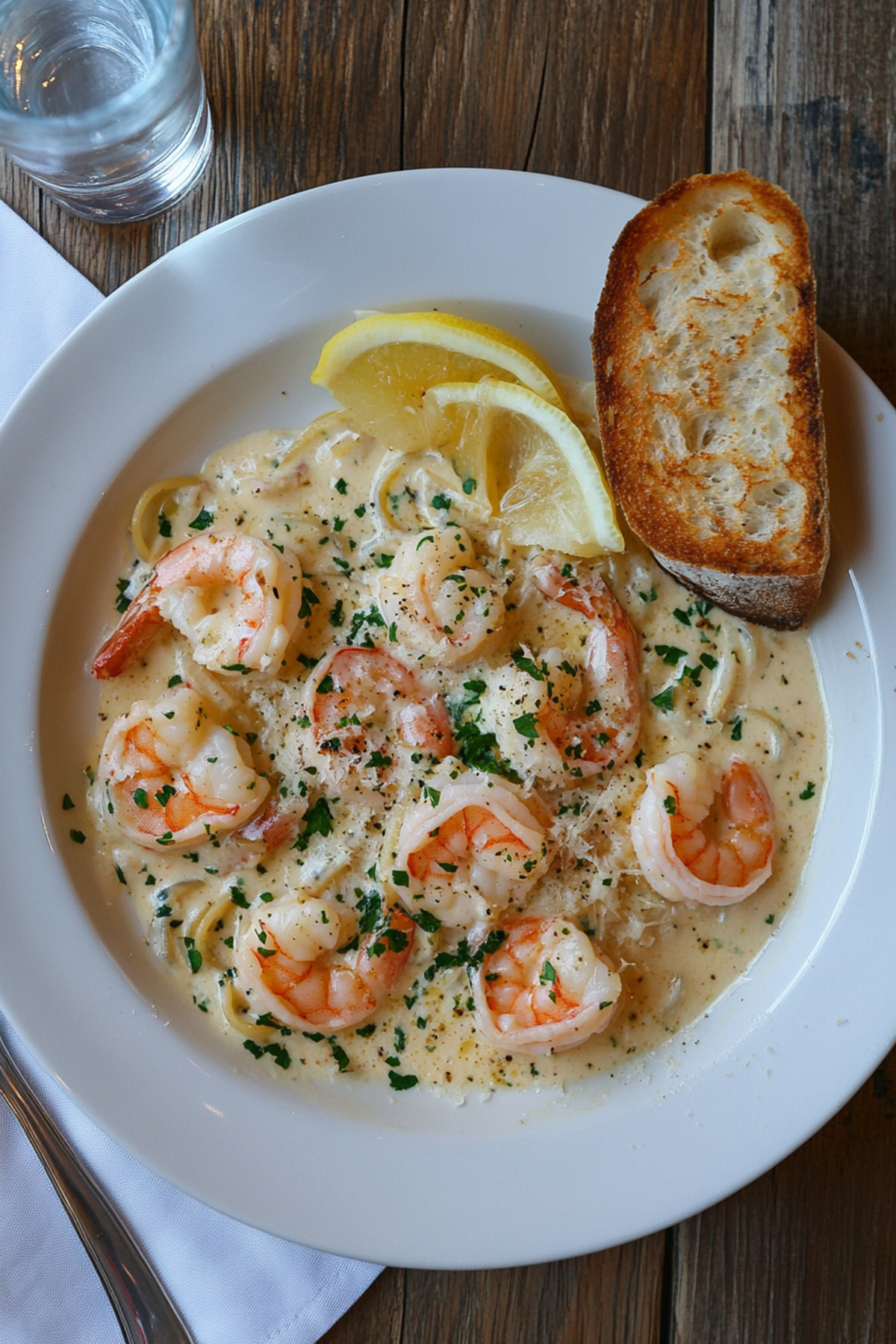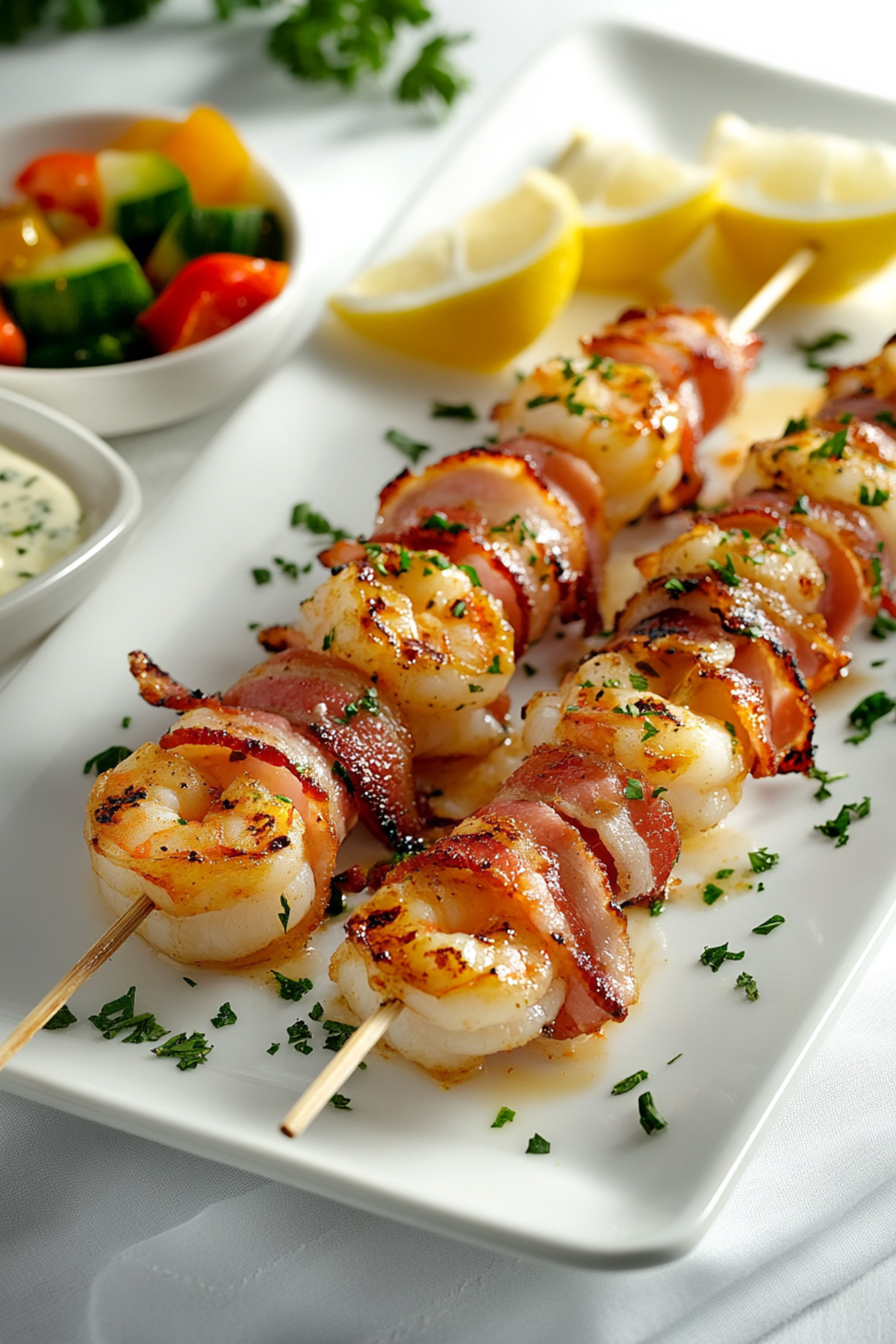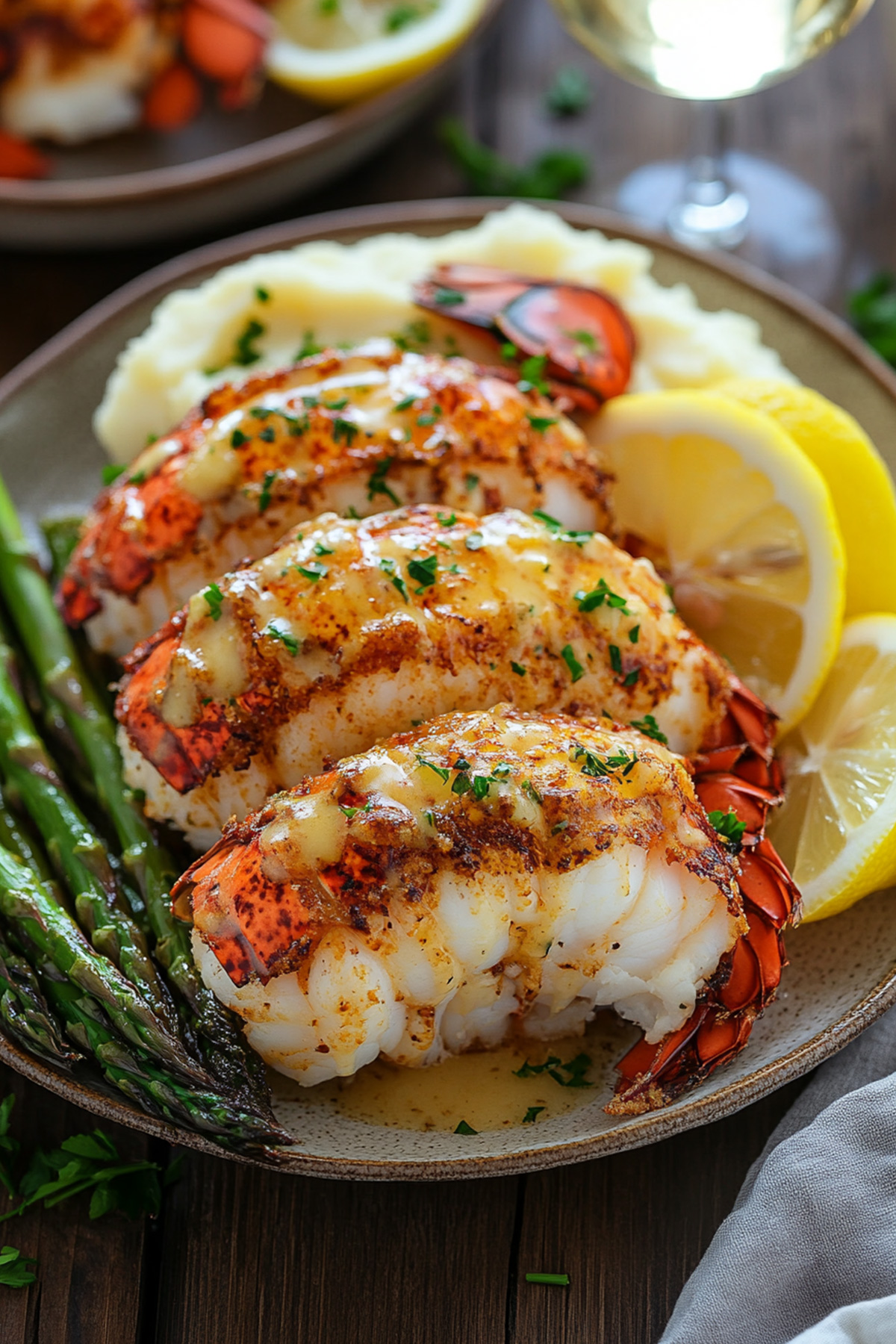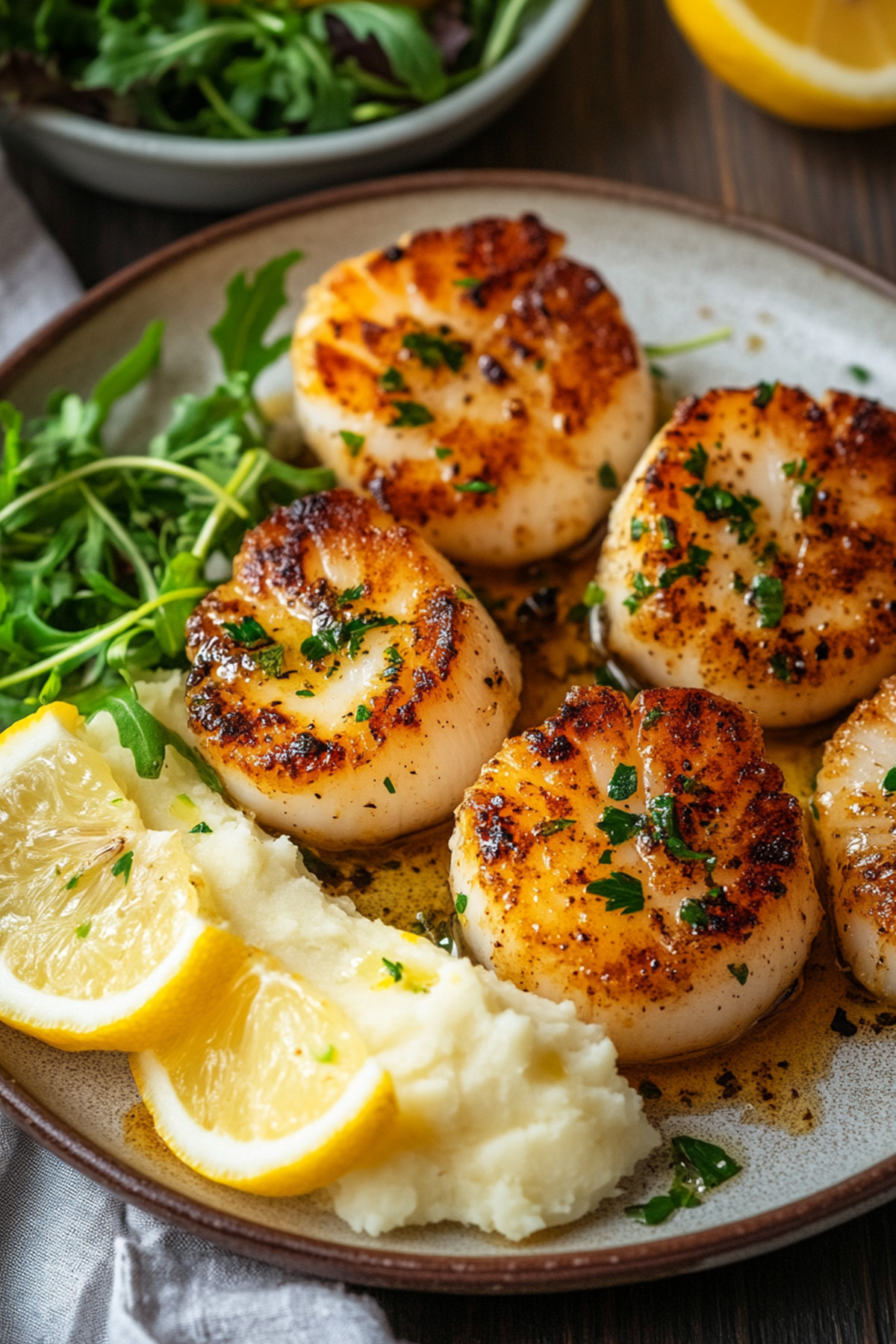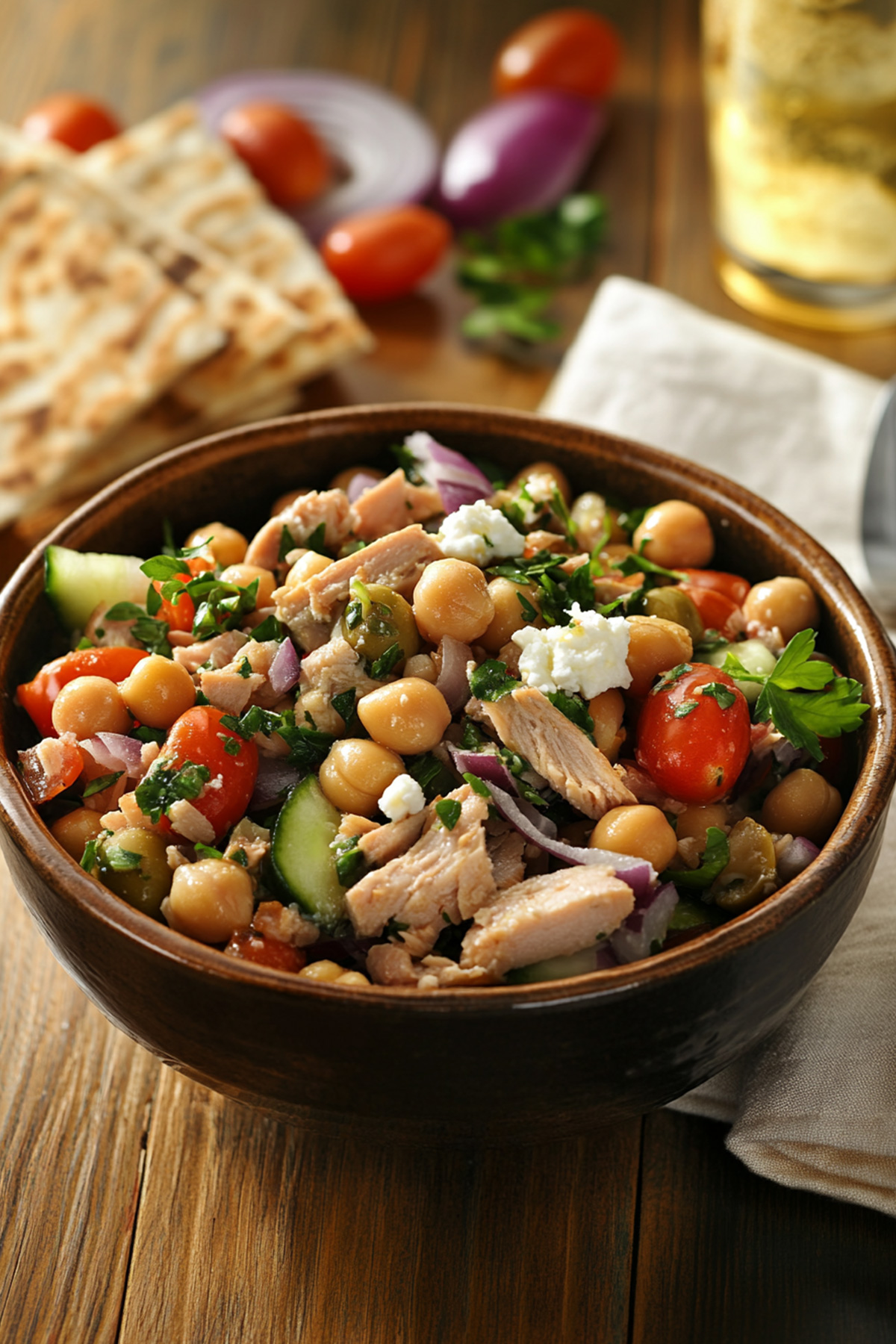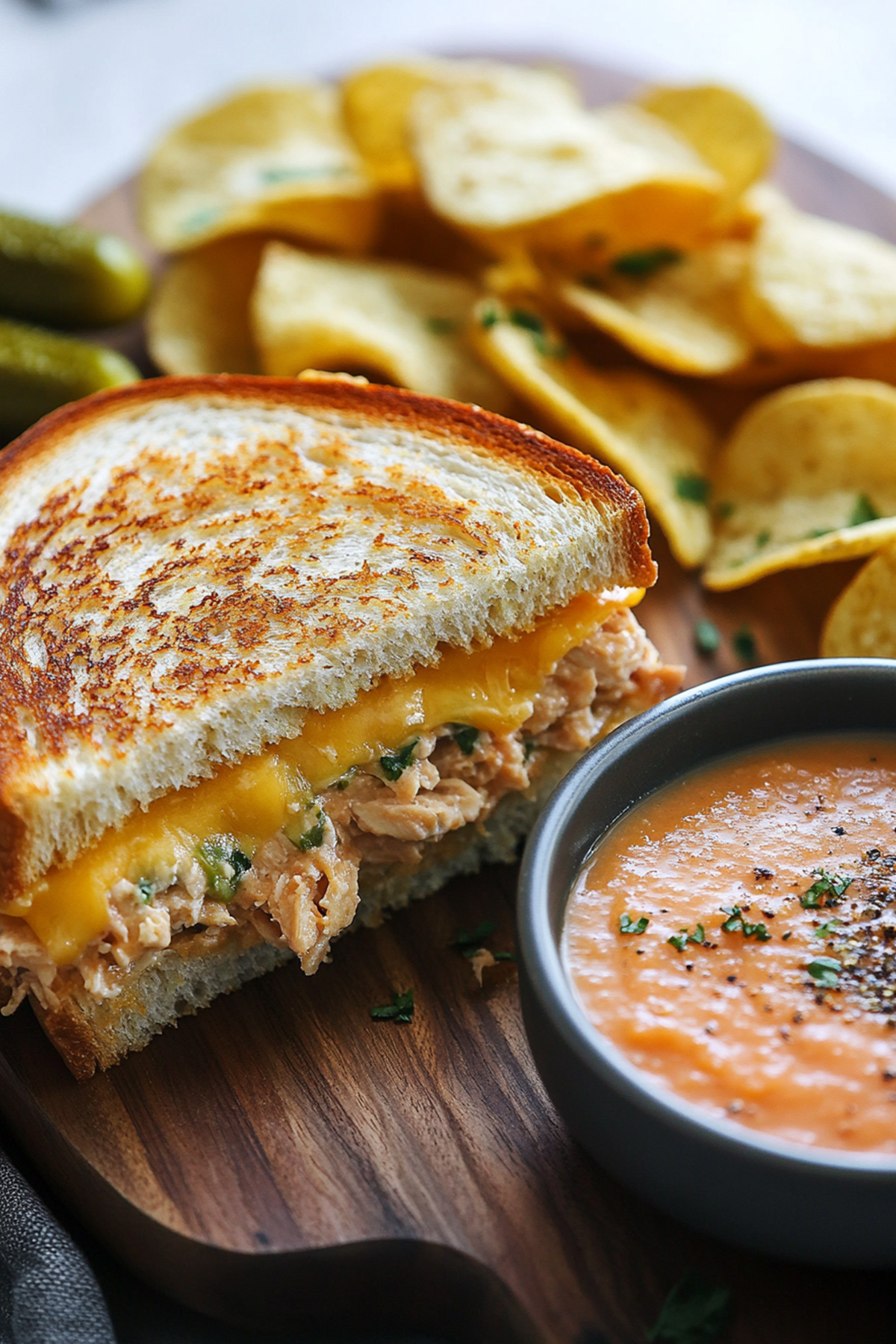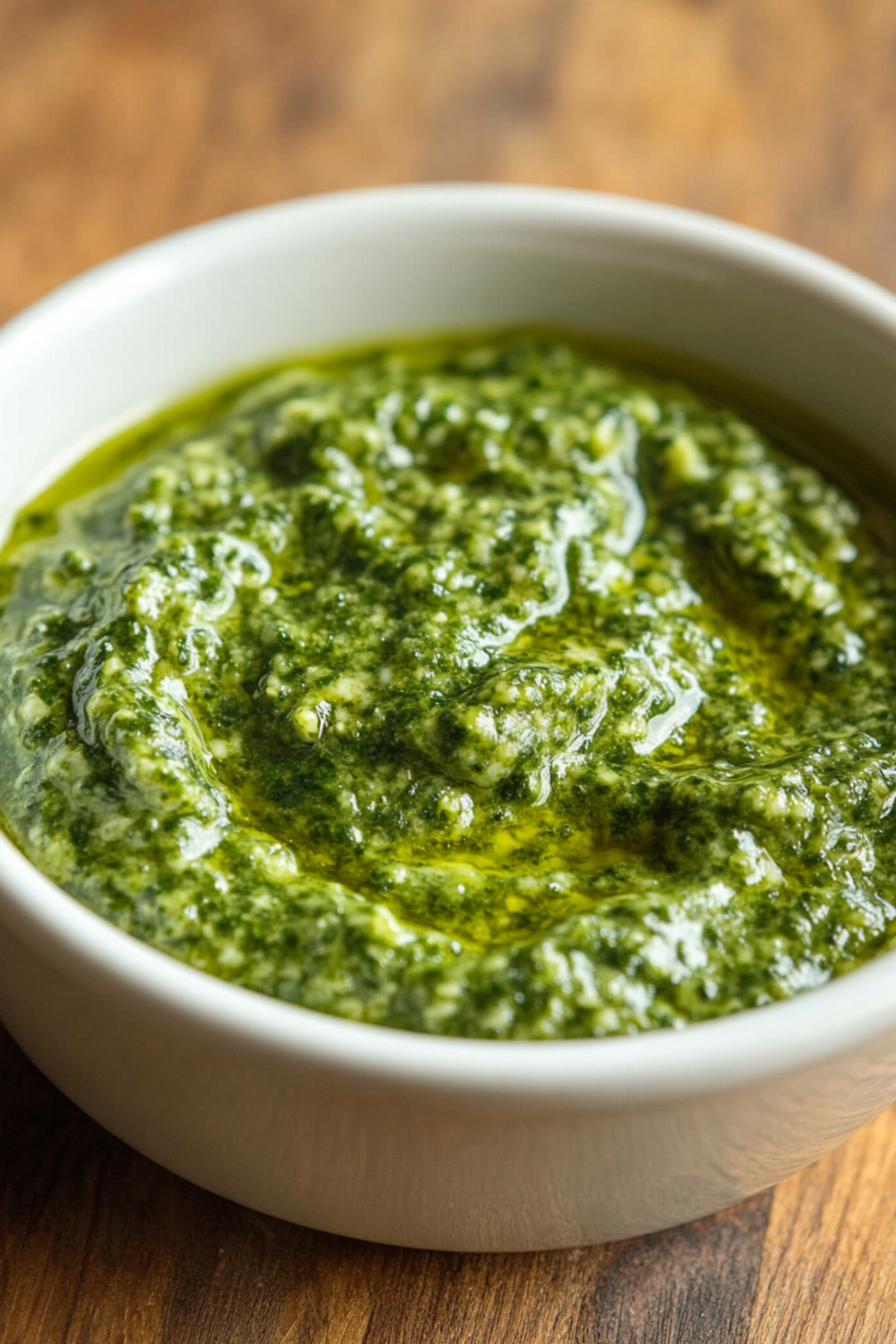Disclosure: As an Amazon Associate and participant in other affiliate programs, we earn from qualifying purchases. We only recommend products we believe will provide value to our readers.
You can prepare your favorite shrimp lo mein recipe within 30 minutes for a perfect weeknight dinner. This popular Chinese stir-fry dish means “tossed noodles” and brings together chewy egg noodles with juicy shrimp and your choice of fresh vegetables.
This detailed guide will help you become skilled at making shrimp lo mein at home, whether you’re new to Chinese cooking or want to expand your recipe collection.
The dish differs from its cousin chow mein’s crispy noodles by using softer, thicker noodles tossed in a flavorful sauce of soy sauce, oyster sauce, and sesame oil. Each step in this piece helps you create restaurant-quality results right in your kitchen.
Table of Contents
What is Shrimp Lo Mein?
Shrimp lo mein stands as a classic Chinese noodle dish where “lo” means “tossed” and “mein” translates to “noodles”. This dish combines soft egg noodles with juicy shrimp, fresh vegetables, and a rich sauce that ties everything together.
The dish’s unique character comes from its preparation method. Fresh egg noodles are boiled until tender and tossed with ingredients and sauce, making it different from its crispy cousin, chow mein.
These egg noodles display a bright yellow color with a pleasantly chewy texture that holds the sauce perfectly.
The sauce plays a vital role in creating authentic shrimp lo mein’s flavors. A traditional mixture has lite soy sauce, dark soy sauce, sweet chili sauce, and hoisin sauce. Sesame oil appears in many recipes, though you can adjust its amount based on your taste.
America’s version of shrimp lo mein has evolved from its Chinese origins while keeping its core character.
The American adaptation features more sauce and tastes slightly sweeter than its traditional counterpart. American restaurants serve their noodles with extra sauce, creating that beloved takeout experience many people crave.
The sort of thing I love about shrimp lo mein is its adaptability. You can swap shrimp for other proteins or create combinations like ‘house’ lo mein that features multiple meat varieties.
The vegetable mix stays flexible too, usually featuring carrots, green onions, cabbage, peppers, and snow peas.
The cooking method sets authentic lo mein apart from other noodle dishes. Noodles need pre-cooking before meeting other ingredients to achieve the right texture and prevent them from becoming too firm or mushy.
This approach creates that signature tender yet slightly chewy texture that makes shrimp lo mein so popular.
Read also: Fried Fish and Shrimp Recipe
Essential Equipment for Making Shrimp Lo Mein
You’ll need the right kitchen equipment to start making shrimp lo mein. A carbon steel wok makes the best cooking vessel, and it helps achieve restaurant-quality results through high-heat cooking.
Making shrimp lo mein is flexible when it comes to cooking equipment. You don’t need a wok – a large pan, cast iron skillet, or dutch oven will work great. A stainless steel skillet can deliver delicious results if you control the heat properly.
Here’s what you’ll need in your kitchen:
- A 13-inch wok or large skillet that gives enough cooking space
- A 6-quart pot to cook noodles
- Glass mixing bowls to prep ingredients
- Quality measuring spoons for accurate sauce portions
- A reliable cutting board for your veggies
- Sharp knives for precise cuts
- Wooden spoons or spatulas that won’t scratch
A flat-bottom wok provides better stability on home stovetops. If you prefer non-stick, look for a pan with high sides that distributes heat evenly. Your pan should heat up fast without hot spots to cook everything uniformly.
The pan’s size is a vital factor. Nobody wants mushy food, so pick a cooking vessel that lets ingredients move freely. Beginners might find a nonstick surface helpful since it makes cooking easier.
A traditional carbon steel wok gives you more options beyond lo mein. You can use it to steam, stir-fry, and deep-fry food. The wok’s seasoned surface adds a nice flavor depth that home cooks love.
One-piece beech wood utensils work best with nonstick surfaces. These tools protect your cookware and give you great control while stir-frying.
Read also: Shrimp Egg Foo Young Recipe
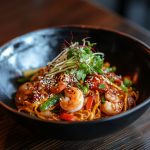
Shrimp Lo Mein Recipe
- Total Time: 27 minutes
- Yield: 4 servings 1x
Description
You can become skilled at making shrimp lo mein at home. This quick and satisfying dish takes just 30 minutes to prepare. The recipe brings together tender shrimp, colorful vegetables, and bouncy egg noodles in a perfectly balanced sauce.
You can make restaurant-quality shrimp lo mein at home with this simple recipe. Juicy shrimp, crisp vegetables, and egg noodles blend perfectly in a savory-sweet sauce. The simple ingredients come together to create a delicious meal that’s better than takeout.
Ingredients
- 1 pound medium shrimp, peeled and deveined
- 8 ounces egg noodles or lo mein noodles
- 3/4 cup water
- 1/4 cup soy sauce
- 2 tablespoons cornstarch
- 1 tablespoon oyster sauce
- 1/2 teaspoon ground ginger
- 1 tablespoon vegetable oil
- Mixed vegetables (altogether 4 cups):
- 3/4 cup sliced green bell pepper
- 3/4 cup chopped celery
- 3/4 cup broccoli florets
- 3/4 cup snap peas
- 1/2 cup onion slices
- 1/2 cup shredded cabbage
- 1 clove garlic, minced
Instructions
- A large pot of lightly salted water should be brought to boil. Cook noodles according to package directions, usually 4-5 minutes.
- The sauce comes together by mixing water, soy sauce, cornstarch, oyster sauce, and ground ginger in a small bowl.
- Heat vegetable oil in a large skillet or wok over medium-high heat. The shrimp should cook until pink, about 2-3 minutes per side.
- Set the shrimp aside after removing them. Cook just until pink to avoid overcooking, as they’ll finish later.
- Add the remaining oil to the pan. The vegetables need about 5 minutes to become slightly tender.
- Add the prepared sauce to the vegetables and stir continuously until it thickens slightly.
- Add the shrimp back to the pan and cook for another minute.
- Mix in the drained noodles and toss until the sauce coats everything evenly.
Notes
- The noodles’ starchiness helps the sauce stick better, so skip rinsing them after cooking.
- You can use fresh or frozen shrimp – just thaw frozen ones under cold water.
- Medium-sized shrimp give the best results.
- Double the sauce recipe if you like more coating.
- Prep Time: 15 minutes
- Cook Time: 12 minutes
- Category: Seafood
- Method: Frying
- Cuisine: Chinese-American
Tips for Perfect Shrimp Lo Mein Every Time
Becoming skilled at basic techniques will lift your shrimp lo mein from good to exceptional. Let’s look at some pro tips that will make every part of your dish stand out.
Selecting and preparing the right noodles
Fresh egg noodles are the best choice for authentic lo mein, and with good reason too – they have the perfect texture and chewiness. All the same, you have several good alternatives:
- Fresh Shanghai-style noodles (refrigerated section)
- Dried egg noodles
- Fresh yakisoba noodles
- Traditional spaghetti (as a practical substitute)
Your noodles’ thickness makes a big difference – look for ones about 1/4 inch thick to get that perfect bite. Fresh noodles need just 2-3 minutes to cook, while dried ones take 5-6 minutes to reach the right texture.
How to prevent noodles from sticking
You can avoid clumpy noodles with proper preparation. Use plenty of water – about 6 cups for a regular portion. Keep stirring the noodles during the first half of cooking time so they cook evenly.
Drain the noodles well and rinse them right away with cold water to stop them from cooking more. This step gets rid of extra starch that makes noodles stick together. Don’t add oil to your cooking water – it won’t mix properly anyway.
Best practices for cooking shrimp in lo mein
Medium to large shrimp (31-40 count) work great in lo mein. Let frozen shrimp thaw completely under cold water before you start. Cook them just until they turn pink, about 2-3 minutes, since they’ll keep cooking with other ingredients.
Sauce consistency secrets
Great sauce depends on how you mix in the cornstarch. Mix it straight into your sauce ingredients instead of adding it later – this saves time and gives you smooth sauce.
Let the sauce simmer until it’s thick enough to coat the back of a spoon. Be careful not to use too much sauce or your noodles will get soggy. A little sesame oil should go in at the end, not during stir-frying, to keep its amazing aroma.
Variations of Shrimp Lo Mein Recipe
A classic shrimp lo mein recipe shines through its adaptability. We mainly used shrimp, but you can swap it with other proteins to create new dishes. Chicken lo mein, beef lo mein, and pork lo mein stand as popular alternatives.
You can also mix multiple proteins to create a house special lo mein – perfect when you have leftover meat and seafood.
The vegetable component gives you endless possibilities. Common additions include:
- Napa cabbage or regular green cabbage
- Shiitake mushrooms
- Bok choy
- Baby corn
- Water chestnuts
- Bean sprouts
- Snow peas
- Red bell peppers
Your dietary restrictions shouldn’t stop you from enjoying this versatile dish. People who follow a gluten-free diet can use tamari instead of regular soy sauce and gluten-free oyster sauce.
The dish transforms easily for vegetarians with tofu replacing shrimp and no fish or oyster sauce in the recipe.
You can boost the nutritional value by adding more vegetables to your lo mein. The sauce quantities need adjustment to maintain proper coating, but this gives you a more filling meal without adding too many calories.
A premade coleslaw mix works as a quick shortcut to add vegetables.
The spice level stays completely in your control. You can adjust or skip spicy ingredients like chili sauce based on your taste. Many home cooks double the sauce for extra coating – a change that works well.
You have options with noodles too. Traditional lo mein noodles give you the most authentic experience, but dried spaghetti or linguine work just fine.
This makes the dish easy to prepare with what you have in your pantry.
The sort of thing I love is creating a “house special” version that combines different proteins. This variation helps clear out freezer items and impresses guests.
Success comes from watching the cooking times for each protein – to cite an instance, see how shrimp cooks faster than beef or chicken.
Read also:
– Shrimp with Lobster Sauce
– Chicken and Shrimp Carbonara
Health Benefits of Shrimp Lo Mein
Shrimp lo mein tastes great and packs impressive nutritional benefits. A standard cup serving (210g) has 210 calories, which makes it perfect for people watching their calorie intake.
The protein content really stands out. You get 18 grams of protein in each serving, which helps maintain and build muscle. This amount matches roughly 1.4 eggs worth of protein.
The calories break down nicely: 25% from fats, 56% from carbohydrates, and 19% from protein. This mix helps keep your energy levels stable throughout the day. Each serving has 23 grams of total carbohydrates and 3.1 grams of dietary fiber to support good digestion.
Looking at vitamins and minerals, shrimp lo mein is packed with nutrients:
- 52 mcg of vitamin A
- 2.6 mg of vitamin C
- 0.20 mcg of vitamin D
- 1.82 mg of iron
- 72 mg of calcium
- 238 mg of potassium
Shrimp adds its own health perks to the dish. It’s naturally low in calories and rich in vitamin B12, selenium, iodine, zinc, and copper. These nutrients help everything from your immune system to thyroid health.
Shrimp is a safer protein choice too. Small fish like shrimp have fewer environmental toxins, especially mercury, compared to bigger fish. This makes shrimp lo mein a great option for regular meals.
The dish has a modest 5.1 grams of fat per serving, with just 1 gram of saturated fat. The shrimp provides beneficial omega-3 fatty acids that support your heart and brain health.
The sodium content sits at 1241 mg, about 54% of your daily recommended intake. Making this dish at home lets you control the salt while keeping all the flavor.
The vegetables in shrimp lo mein add fiber and various plant nutrients. These ingredients work together with protein-rich shrimp to create a balanced meal that supports your overall health.
References:
– Carbmanager
– Eat This Much
Nutritional Information
You can make better meal planning decisions by knowing the exact nutritional content of shrimp lo mein. A standard one-cup serving (200-210 grams) packs 210-252 calories.
Here’s how the macronutrients break down per serving:
| Nutrient | Amount | Daily Value |
|---|---|---|
| Total Fat | 5.1-7.12g | 7-9% |
| Total Carbohydrates | 23-35.2g | 8-13% |
| Protein | 12.1-18g | 19-62% |
| Dietary Fiber | 3.1-4.4g | 11-16% |
| Total Sugars | 2.2-6.3g | – |
The dish’s fat profile offers these beneficial components:
- Saturated Fat: 1-1.25g
- Monounsaturated Fat: 1.6-2.882g
- Polyunsaturated Fat: 2.1-2.338g
The dish’s essential minerals and vitamins include:
- Calcium: 46-72mg (4-6% DV)
- Iron: 1.82-2.9mg (10-16% DV)
- Potassium: 238-258mg (5-8% DV)
- Vitamin A: 38-52mcg (4% DV)
- Vitamin C: 2.6-10.2mg (7-11% DV)
The sodium content changes by a lot based on preparation method and sauce quantity. Restaurant versions pack 1,241-1,760mg of sodium, which is 54-77% of the recommended daily intake. You can control sodium levels better with home preparation.
The cholesterol ranges from 48-120mg, adding 16-40% to your daily recommended value. This amount works well within healthy dietary guidelines as part of a balanced meal plan.
The micronutrient profile shows:
- Vitamin D: 0.20mcg
- Vitamin B12: 0.3mcg
- Folate: 13.2mcg
- Magnesium: 16.5mg
- Zinc: 0.8mg
- Selenium: 18.6mcg
The calories split up this way:
- 25% from fat
- 56% from carbohydrates
- 19% from protein
Shrimp lo mein serves as a moderately caloric option with good protein content and essential nutrients. A single serving provides 12-13% of daily caloric needs on a 2,000-calorie diet.
References:
– Eat This Much
– Fatsecret
Conclusion
Shrimp lo mein makes a perfect weeknight dinner that combines simplicity with satisfaction. This classic Chinese dish adapts remarkably well – you can switch proteins, add different vegetables, or adjust sauce levels based on your priorities.
You can create restaurant-quality shrimp lo mein at home with simple kitchen equipment in just 30 minutes.
Health-conscious food lovers will appreciate its balanced nutritional profile that packs 18 grams of protein per serving and delivers essential vitamins and minerals.
Become skilled at the techniques that ever spread here, particularly proper noodle preparation and sauce consistency, and your results will turn out delicious every time.
Authentic ingredients boost the final dish, but practical substitutions work well when needed. This approach lets you enjoy this takeout favorite whenever cravings strike.

